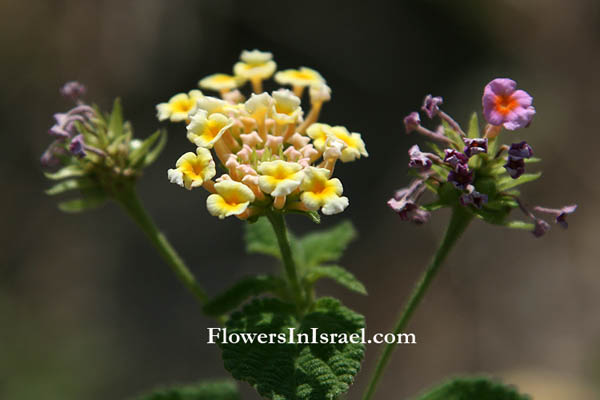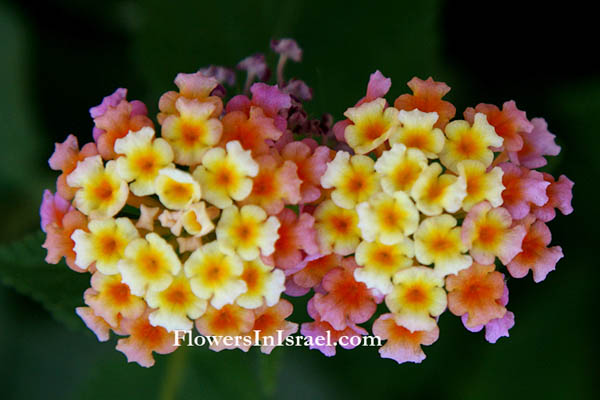Spanish Flag, Red (yellow, wild) Sage,
Hebrew: לנטנה ססגונית, Arabic: وردة الذيب
| Scientific name: | Lantana camara L. | |
| Synonym name: | Lantana armata Schauer , Lantana aculeata L. | |
| Common name: | Spanish Flag, Red (yellow, wild) Sage | |
| Der Deutsche Name: | Wandelröschen | |
| Hebrew name: | לנטנה ססגונית | |
| Arabic name: | وردة الذيب | |
| Nederlandse naam: | Wisselbloem | |
| Family: | Verbenaceae, Verbain Family, ורבניים |

|
| Life form (Raunkiaer): | Phanerophyte shrub | |
| Spinescence: | Emergences | |
| Leaves: | Opposite, entire leaf, dentate or serrate | |
| Flowers: | Yellow, red, pink | |
| Flowering Period: | April, May, June, July, August, September, October | |
| Habitat: | Cultivated areas | |
| Distribution: | The Mediterranean Woodlands and Shrublands, Deserts and extreme deserts | |
| Chorotype: | China | |
| Summer shedding: | Perennating |

Derivation of the botanical name: Lantana, a Latin name for Viburnum for the similar inflorescence camara, a South American vernacular name for a species of Lantana. armata, armor, armed; equipped, armed (spiny). aculeata, with prickles or stings, spine-like. The Hebrew name: לנטנה, Lantana, transliteration from the scientific name.
The flowers, when yellow, produce nectar and are pollinated by butterflies. This plant is attractive to bees, butterflies and/or birds. A number of bird species and sometimes sheep and goats disperse the seeds. Lantana berries change colour from dark green to black, they are edible when ripe but toxic before they become ripe. 



|